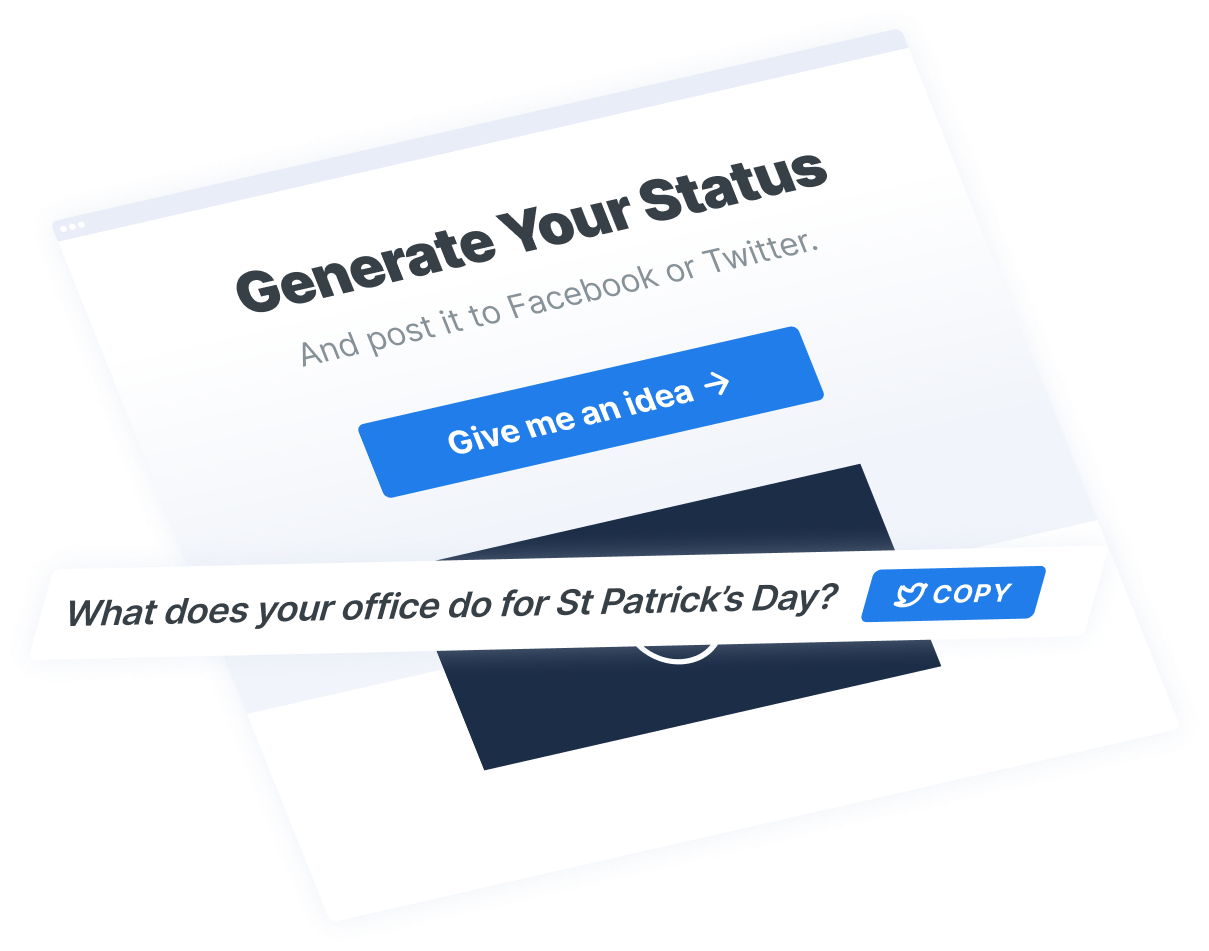- Home
- Blog
- Social Media
- Decoding Your Social Media Results: A Comprehensive Guide to Tracking, Measuring, and Improving
Decoding Your Social Media Results: A Comprehensive Guide to Tracking, Measuring, and Improving
-
 Published: May 12, 2025
Published: May 12, 2025
-
 9 min. read
9 min. read
-
Summarize in ChatGPT
-
 Lornah Ngugi
Lornah Ngugi Marketing Writer
Marketing Writer
- Lornah Ngugi is a seasoned digital marketing writer with 6+ years of experience translating complex marketing strategies into engaging, results-driven content. She holds a B.S. in Business Information Technology and is certified in HubSpot Academy, Google Analytics, LinkedIn Marketing, and Google Digital Academy. Lornah regularly contributes to the WebFX blog and SEO.com, where she’s authored hundreds of marketing guides that help readers turn their goals into measurable results through practical, data-informed insights. When she’s not writing, you’ll find her enjoying a quiet walk in the park, sipping black coffee, or finding creative inspiration in a good chocolate bar.
Table of Contents
- Why is measuring social media results important?
- What are organic social media results?
- What are inorganic social media results?
- How to track social media results
- How to measure social media results
- How to improve social media results
- FAQs about tracking, measuring, and improving social media results
- Optimize your social media marketing results with WebFX
Social media marketing is among the most effective digital marketing strategies that help boost brand recognition and awareness. It also drives an impressive return on investment (ROI), considering it’s a cost-effective strategy that enables you to earn qualified leads.
But, to ensure you are driving the intended social media results, you must regularly track and measure key metrics. These help you uncover patterns, trends, and insights to improve future social media marketing.
Below is a comprehensive guide to tracking, measuring, and improving paid and organic social media marketing results.
Why is measuring social media results important?
Tracking and analyzing social media data has numerous benefits for businesses looking to promote or advertise their brand, products, and services to their target audience on different social media platforms.
Here are the main advantages of measuring social media results:
- Helps businesses understand their audience better, so they adjust their buyer personas to reach more interested people
- Uncover the social media strategies and content that are working — you can maximize results from these and efficiently reallocate your budget
- Unveil trends and how they influence performance on different social media platforms and marketing campaigns
- Anticipate the results of future marketing strategies and campaigns so you can plan for them accordingly
What are organic social media results?
Organic social media marketing involves sharing different types of content, like photos, videos, and posts, without a digital ad spend. Therefore, organic social media results refer to performance reports obtained from free content shared on social media platforms.
The main goals of organic social media marketing include building authentic customer relationships, driving genuine engagement, and fostering tight-knit communities. They also deliver more long-term, sustainable growth and build a loyal customer base that trusts in your business and offerings.
To drive results with organic social media marketing, you must consistently share valuable and engaging content that resonates with your audience. Active engagement in the form of starting conversations and responding to comments and messages also ensures you get the results you desire.
What are inorganic social media results?
Inorganic social media advertising campaigns involve running targeted paid ads, sponsoring content, or using influencers to promote your brand and business. They drive immediate results, including visibility, reach, leads, and conversions.
Tracking and measuring paid social media advertising results are essential to ensuring ad spend is budgeted and utilized efficiently. It also provides insights into how much ROI social media advertising campaigns drive.
Paid social media marketing results provide more precise tracking and analysis of performance metrics, like reach, impressions, clicks, and engagement. You can use paid ad metrics to retarget specific customers and recapture them later on.
How to track social media results
There are various ways to track social media marketing results. Here are some of the most reliable tools for monitoring and gathering social media data results:
1. Leveraging analytics tools on social media platforms
One of the main ways to track social media results is by building tracking and analytics on social media platforms. The tools allow businesses to track metrics like audience demographics, reach, and engagement without installing third-party software.
Here’s a breakdown of how the built-in analytics tools in top social media platforms work:
- Meta: Insights on Meta Business Suite provides access to metrics, trends, and visual reports on organic and paid social media strategies like Facebook and Instagram.
- TikTok: Creators can access TikTok analytics that show metrics, like followers, views, likes, shares, and comments.
- YouTube: You can find analytics on the YouTube Studio app, showing an overview of how your channels and videos perform and how your audience interacts with your content.
- LinkedIn: LinkedIn Page analytics reveal information on content, followers, leads, competitors, and engagement.
- X: X Analytics showcases metrics for each post, such as views, likes, reposts, replies, and view rate.
2. Utilize Google Analytics
Google Analytics is famously known for its role in measuring website traffic and engagement, but it is also reliable for measuring results for social media apps. It’s especially useful for tracking website traffic streaming from social media platforms.
Using Google Analytics to track social media traffic provides comprehensive insights into audience demographics, behaviors, interests, traffic, and conversions. The platform allows customized reporting that focuses on monitoring specific metrics.
To access social media results on Google Analytics, navigate to the Traffic Acquisition. Look for the Session Source/Medium dimensions to view traffic from the specific social media platforms and then utilize the filters to gather deeper insight.
3. Use social media reporting tools
There are a variety of third-party social media reporting tools, like HootSuite, Sprout Social, and Buffer. They integrate seamlessly into social media platforms to collect data and offer insights into campaign effectiveness, competitor activity, and audience engagement.
Let’s look at the top third-party reporting tools:
- Sprout Social: It pulls all your social media results to one platform that offers enterprise-level features and reports for organic and paid social media campaigns.
- HootSuite: It’s a full-suite social media management platform that you can use to create customizable reports to focus on specific goals and metrics.
- Buffer: It simplifies social media analytics and reporting by enabling easy report creation, performance tracking, and audience insights.
How to measure social media results
Measuring social media results helps you envision the value of your campaigns and understand what works and what doesn’t. Tracking tools can measure thousands of metrics, but not all are essential. The following are the social media key performance indicators (KPIs) you should focus on:
1. Conversion rate
The conversion rate is a measure of how many times people convert after following a call-to-action link from your social media pages to your website. It measures how effective your social channels are at inspiring action from followers, whether that’s making a purchase, downloading resources, or signing up for your newsletter.
Measuring the conversion can help you find ways to optimize social media efforts, increase revenue, and boost your ROI. Here’s the formula for calculating social media conversion rates
Social media conversion rate = Number of Conversions / Total Audience * 100
Free and Quick Conversion Rate Calculator
2. Reach and impressions
Social media reach and impressions help you understand your audience growth and identify audience growth patterns. A high audience reach means more unique users get to see your content, which boosts brand awareness and could signal an increased number of new followers.
Impressions, on the other hand, refer to the total number of times your content is displayed despite being viewed by the same users over and over again. A high impression rate indicates that your content has good visibility and potential for engagement. It also helps you identify ways to improve content and targeting, as well as avoid ad fatigue.
3. Engagement
Average engagement rate = Total number of engagement actions / (Total number of followers * 100)
Social media engagement is a valuable metric to measure because it reveals how effective your efforts are in building stronger relationships and fostering brand loyalty.
Measuring engagement involves analyzing follower count, likes, shares, comments, and saves, which signal whether the content resonates with your audience. Measuring the average engagement rate helps you determine how to effectively communicate with your audience.
Here’s how to calculate the average engagement rate:
Average engagement rate = Total number of engagement actions / (Total number of followers * 100)
4. Brand awareness
Focusing on brand awareness as a metric reveals how much attention your brand gets from social media during a specific period. It’s a rather subjective metric — you must start by deciding what attention looks like for your brand. It could be more shares, mentions, or impressions.
Website traffic is another metric that indicates brand awareness and measures the number of visitors that click through to your website, bounce rates, and time spent on each page. Higher brand awareness means your audience is engaged and more likely to become qualified leads.
How to improve social media results
There are various ways to improve organic and paid social media marketing results. Optimizing organic social media results is a complex process that relies on the social media platform’s algorithm. You can help your website rank better by producing high-quality, up-to-date, and user-generated content for the algorithm.
For social media advertising, you can improve the results by:
- Improving your targeting with audience segmentation and personalizing messaging
- Optimizing your ads by using hashtags strategically, remarketing, and A/B testing
- Tracking and analyzing results to gain deeper insights into your ad performance
- Mixing up content types and tailoring them to specific platforms
Regular social media ad audits ensure that your advertising strategies remain aligned with your business goals and adapt to changing market trends.
FAQs about tracking, measuring, and improving social media results
Get answers to some of the most common questions marketers and business owners ask about how to track, measure, and improve organic and paid social media marketing results.
Why is measuring social media results important?
Measuring social media results helps marketers understand the effectiveness of their strategies and campaigns. Additionally, it provides tangible evidence of your social media campaign value and justifies your marketing budget.
Should you combine organic and paid social media marketing?
Combining organic and paid social media marketing creates a holistic approach that boosts efficiency and effectiveness. Organic campaigns will drive genuine engagement, while paid campaigns will drive immediate results. It’ll help you build brand awareness, foster brand loyalty, and boost sales and revenues.
Are my social media results good?
Your social media results are as good as your key performance indicators. A high engagement, conversion rate, reach, and impressions are good social media results that indicate your strategies are effective.
Optimize your social media marketing results with WebFX
With so many moving parts, optimizing social media marketing results may be challenging for business owners with so many other core business operations to focus on. Queue WebFX — a leading social media marketing and advertising company with 45 specialized team members to handle your strategy, content creation, distribution, and promotion.
We’ve managed over $15.7M client ad spend and consistently achieved a 93% client satisfaction rate. You can trust us to drive engagement for your business on different social media channels, nurture users into leads, and leverage AI for better messaging and targeting.
Contact us online today to accelerate your social media marketing ROI, or call us at 888-601-5359 to speak to a strategist about your social media results.
-
 Lornah Ngugi is a seasoned digital marketing writer with 6+ years of experience translating complex marketing strategies into engaging, results-driven content. She holds a B.S. in Business Information Technology and is certified in HubSpot Academy, Google Analytics, LinkedIn Marketing, and Google Digital Academy. Lornah regularly contributes to the WebFX blog and SEO.com, where she’s authored hundreds of marketing guides that help readers turn their goals into measurable results through practical, data-informed insights. When she’s not writing, you’ll find her enjoying a quiet walk in the park, sipping black coffee, or finding creative inspiration in a good chocolate bar.
Lornah Ngugi is a seasoned digital marketing writer with 6+ years of experience translating complex marketing strategies into engaging, results-driven content. She holds a B.S. in Business Information Technology and is certified in HubSpot Academy, Google Analytics, LinkedIn Marketing, and Google Digital Academy. Lornah regularly contributes to the WebFX blog and SEO.com, where she’s authored hundreds of marketing guides that help readers turn their goals into measurable results through practical, data-informed insights. When she’s not writing, you’ll find her enjoying a quiet walk in the park, sipping black coffee, or finding creative inspiration in a good chocolate bar. -

WebFX is a full-service marketing agency with 1,100+ client reviews and a 4.9-star rating on Clutch! Find out how our expert team and revenue-accelerating tech can drive results for you! Learn more
Twitter and Facebook Status Generator
Finding engaging social media content for your business can be difficult. Use our tool to quickly find ideas and post directly to your page.
Give Me an Idea
Table of Contents
- Why is measuring social media results important?
- What are organic social media results?
- What are inorganic social media results?
- How to track social media results
- How to measure social media results
- How to improve social media results
- FAQs about tracking, measuring, and improving social media results
- Optimize your social media marketing results with WebFX

Social Media Success Story

Proven Marketing Strategies
Twitter and Facebook Status Generator
Finding engaging social media content for your business can be difficult. Use our tool to quickly find ideas and post directly to your page.
Give Me an Idea




